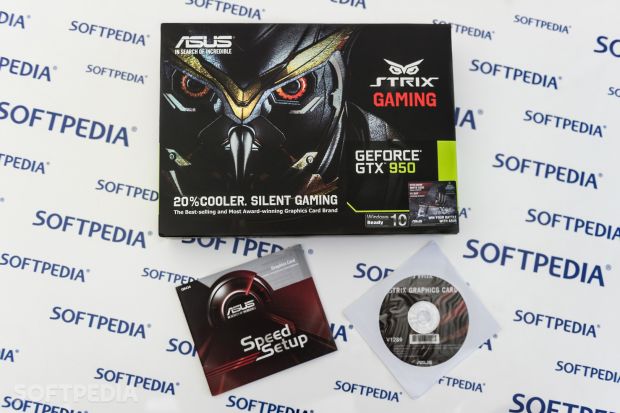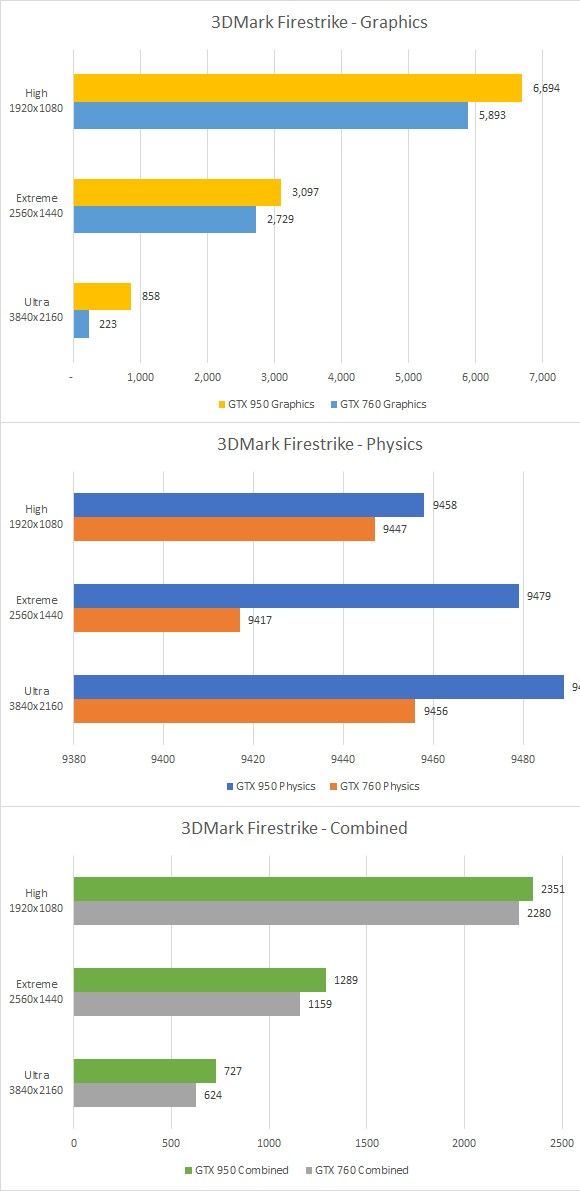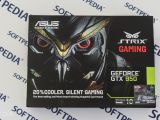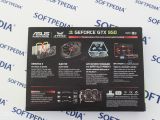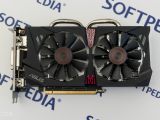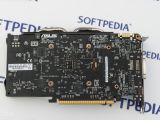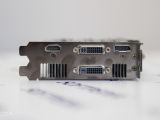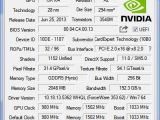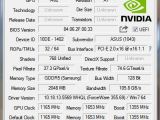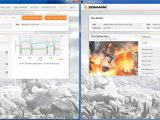In the price battle between companies, it’s not the one who has a fair price/quality ratio who always wins, but the one who lets the customer have the better end of the deal. In NVIDIA vs. AMD product and price battles on retail shelves, the latter has always tried to let customers have the better end of the deal when buying a new graphics card. However, some deals were good, and customers were happy, others not so good, and sales dropped.
At the moment, in the mid-entry sector of graphics cards, AMD has managed to capture budget gamers’ attention with a fresh and very affordable series of graphics cards: the Radeon R7 series, and especially the R7 370, which offers acceptable performance for a very affordable $149. On the other hand, NVIDIA offers, at the same price, an antiquated and underpowered GTX 750Ti that simply could not compete with the recently launched and specifically mid-entry-targeted R7 series.
From NVIDIA’s standpoint, the only thing available to tackle it head-on was the GTX 760, at slightly over the $200 mark, which was also an antique device from 2013 that was screaming “not a good deal” for potential customers, since they want powerful cards not only to have great performance but to be recently launched as well. Expecting exactly this mindset, AMD has found a very profitable niche this summer, which it has managed to exploit in full with the newly launched Radeon R7 series… until now.
Context presentation
Deciding to plug the sub-$200 gap with a decently performing card once and for all, NVIDIA launched the brand new GTX 950 card, which outperforms not only its direct ancestor, the GTX 750Ti, but also its more potent cousin, the GTX 760, putting this way a huge pressure on AMD’s deal-making solutions.
Sensing NVIDIA’s launch as being critical to its market share, AMD had already under wraps the R9 370X, which could fill back the mid-entry market share for AMD with very competitive performance, but since it’s Chinese markets-only at the moment, a proper price or performance assessment would be difficult to achieve.
| ASUS GeForce GTX 950 | GeForce GTX 760 | |
|---|---|---|
| Shader Units | 768 | 1152 |
| ROPs | 32 | 32 |
| Graphics Processor | GM206 | GK104 |
| Transistors | 2940M | 3500M |
| Memory Size | 2048 MB | 2048 MB |
| Memory Bus Width | 128 bit | 256 bit |
| Core Clock | 1140MHz+ | 980MHz+ |
| Memory Clock | 1653MHz | 1502MHz |
| Price | $170 | $149 |
NVIDIA decided to implement a cost-effective measure for dropping the price tag on the new GTX 950. It took its original GM206 silicon die and disabled two of its eight SMM units, dropping about 25% of its bigger brother’s performance. This way, CUDA cores count went from GTX 960’s 1024 to GTX 950’s 768, while the core is clocked at 1024 MHz, with a GPU Boost frequency of 1188 MHz, while the memory clock goes to 6.60 GHz GDDR5-speed, having a total of 105.6 GB/s memory bandwidth.
Packaging and components
Our own ASUS GTX 950 STRIX OC came with ASUS’ own signature cooling device that features a dual slot, hence DirectCU II instead of III, dual-fan cooling solution that helps controlling thermal loads caused by the increase of the card’s base clock to 1140MHz, outperforming this way, at least on paper, both the GTX 960 base clock of 1127MHz and GTX 760’s 980MHz. Memory clock, however, remained untouched, giving the same 1653MHz frequency.
Packaging-wise, it’s pretty casual: the card comes in a cardboard box placed inside the outer box colored with the known STRIX owl, while stating that it is Windows 10-ready. Since the card was launched after Microsoft’s operating system, it’s just a small marketing message for letting consumers know that the card will operate in full condition with the new OS.
We were surprised, however, that ASUS has a deal with Wargaming.net in offering fresh GTX 950 owners a two-week premium account in World of Warships, something that will clearly please Wargaming.net fans.
Accessories-wise, you will receive, besides the card, a documentation flyer and a driver CD with a fancy ASUS STRIX sticker.
Test Setup
| OS | Windows 7 Professional 64-bit SP1 |
|---|---|
| CPU | Intel Core i7 3820 @ 3.60GHz Sandy Bridge-E 32nm Technology |
| RAM | Kingston Hyper X 8.00GB DDR3 @ 667MHz (9-9-9-24) |
| Motherboard | ASUSTeK COMPUTER INC. RAMPAGE IV EXTREME (LGA2011) |
| Graphics | ASUS GTX 950 STRIX / GTX 760 |
| Monitor | DELL P2311H (1920x1080@60Hz) |
| Storage | 111GB ATA KINGSTON SH100S3 SCSI Disk Device (SSD) 465GB ATA WDC WD5001AALS-0 SCSI Disk Device (SATA) |
For a more convincing side-by-side comparison, we chose the GTX 760 also from NVIDIA, since it’s the closest card in terms of performance to the GTX 950 and they both sell for under $200 dollars, depending on the manufacturer. Another reason we chose the GTX 760 was to check if the myth of NVIDIA cards ending in x60 or x80 being superior to those ending in x30 or x50 is true. Usually, they are, but the GPU can have the final word sometimes.
3D Mark Advanced
We tested the new GTX 950 card with the GTX 760 using the 3D Mark Advanced benchmarking software updated to its latest 20 August SystemInfo 4.40 patch. We put the cards through their paces in FireStrike Ultra, Extreme and FireStrike High Performance. Although the Ultra and Extreme tests are specifically made only for the highest tier cards available on the market, the data coming out of those tests helped us better assess the performance of the two cards.
FireStrike High Performance
Starting with the most forgiving of the FireStrike tests, the FireStrike High Performance tests the shaders, the physics and then combines them in a detail-rich scene that runs on a 1920x1080 resolution, offering the normal stress any high performance a computer needs to handle in today’s games.
The tests results side by side declared the GTX 950 the winner with a score of 5,867 versus GTX 760’s score of 5,347, with the former having around 3fps more in the graphics tests (31fps vs. 28fps), while also being marginally better in the physics score with 1fps more (30fps vs. 29fps). The combined tests that stressed the card to their limits both had the cards struggle at the 10fps limit.
Temperature-wise, the GTX 950 remained cooler for the duration of the test, never going higher than 70 degrees Celsius, while the GTX 760 touched the 80 degree Celsius limit during the graphics tests.
According to FireStrike High Performance, the two cards are very similar in performance, with the GTX 950 taking a marginal lead. However, the newest GTX did fare much better temperature-wise, showing the effectiveness of ASUS’ already famous cooling solution vs. our stock NVIDIA GTX 760.
FireStrike Extreme
FireStrike Extreme raises the resolution to QWHD 2560x1440, increasing the tessellation volume and dynamic particle illumination. The Physics test runs 32 parallel simulations of soft and rigid body physics on the CPU, a reason the framerates will not differ too much on the two cards.
This time, however, the gap between the two cards begins to widen up a bit. Although none of the cards crossed the 20fps line in any of the tests, except the physics one, the final victor is, again, the GTX 950 with a score of 2970 vs. 2652 by the GTX 760.
The race was, again, tight between the two cards, with GTX 950 having a lead of just 1fps in front of the GTX 760, 15fps vs. 14fps in graphics tests, and 6fps vs. 5fps in combined tests. The physics tests had them both perfectly on par at 30fps. Both of the cards were categorized as being better than just 24% of tested systems in FireStrike Extreme, so nothing to be proud of in here.
FireStrike Ultra
Being considered as some sort of mother of all graphics cards tests, the FireStrike Ultra is the toughest and the most merciless of all graphical tests available. No ordinary computer will be able to handle this demo as it boosts graphical resolutions to full 4K. At least 3GB of video memory is required to start the Ultra test by default, but it seems this was not enough to reach fps rates higher than 30 at 3840x2160 resolution in any scenario.
Predictably, the test results showed the GTX 950 as being the winner , but this time by a much larger margin: 973 for the GTX 950 vs. 282 for the GTX 760, in conditions where top-tier GTX 980Ti and the Fury X got 3779 vs. 3515 points.
To put this in perspective, the GTX 950 is not a 4K-ready graphics card, even though it does come with HDMI 2.0 and H.265 codec support integrated, but what it has managed to do here is prove that the GM206 GPU, even when hair-trimmed, is powerful enough to provide a minimum of performance in 4K gaming if placed in SLI. Surprisingly, the GTX 760 kept cool the entire duration of the test, well under 60 degrees Celsius, while the GTX 950 worked at a standard of 60 degrees Celsius.
Overall, it seems that, although on paper the GTX 760 has the larger memory bandwidth of 256-bit and 200 more shader units, somewhat comparable to the R7 370’s 1024, it lacks the core clock frequency while it also has the older GK104 GPU that simply cannot cope with any resolutions beyond 1080p in any reasonable form.
In the end, the GTX 950 takes the crown, proving, just as AMD did before it, that a newer GPU will almost always outperform a powerful but older die when tackling higher and higher rendered resolutions.
Witcher 3 Wild Hunt
Developed by Polish studio CD Projekt RED, the Witcher 3 follows the adventures of Geralt of Rivia in a fantasy world created by Andrzej Sapkowski. In our review of The Witcher 3, we praised the quest system and the free roaming in a fantasy world within a beautiful medieval environment offered by one of the most graphically demanding games on the market.
The Witcher 3: Wild Hunt is an NVIDIA-dedicated title, so there won’t be any bias regarding optimizations or lack of support for key features. Our game was set on High with most features on , with NVIDIA HairWorks set on Geralt but with Sharpening set on Low and Ambient Occlusion set on SSAO on 1920x1080 resolutions. The game worked great on a constant 30fps+, with no hiccups or framedrops occurring often. Witcher 3 was highly playable even on 30fps and it looked good. Always staying above the 30fps helped the game to play in a very stable manner. Lowering the settings even more, at Medium, helped to ramp up the framerate to about 40fps+ without affecting the overall performance of the game. The temperature of the GPU kept a steady 65 degrees Celsius, while the game was eating about 1GB of video memory.
Compared with the GTX 950, the older GTX 760 performed significantly worse, giving a framerate average of 20 to 25fps, often having performance hiccups when the camera was moving from a low-detail scene to a richer one. Unlike the GTX 950, lowering details to Medium didn’t improve things either, even if the fps went a bit higher to the mid 30fps.
Metro: Last Light Redux
Being the successor to the highly praised Metro 2033, Metro Last Light tells the story of Artyom, a post-nuclear apocalypse survivor in the Moscow underground tunnels trying to find the source of the mysterious Dark Ones while traveling from one human outpost to another inside the Russian capital’s decaying subway tunnels.
Metro Last Light, being an NVIDIA dedicated title as well, worked pretty well on the new GTX 950, if not flawlessly. Our settings were all on Very High, SSAA turned off with Texture Filtering x16, with Motion Blur Normal, Tessellation Normal and Vsync on. On these settings, we had a constant ~60fps in all situations. However, the moment we switched SSAA on, the framerate plummeted to a lowly 25fps, making the game almost unplayable. However, this is somewhat normal since it super-samples the entire resolution of your screen to offer a “brute force” antialiasing.
Overall, the card handled the game well with no corruptions or framedrops, keeping well within what people would call high visual quality with great performance.
Almost surprisingly, the GTX 760 didn’t underperform as badly as it did in Witcher 3, giving a healthy performance output of 50fps+ as well on the same settings as the GTX 950. It must be mentioned that Metro Last Light also came around the same time GTX 760 was launched, so the game was optimized to run perfectly on the old NVIDIA card. However, when compared side by side, the GTX 950 naturally bested the old GTX 760 with an extra 5fps to 10fps performance output almost every time.
Middle Earth: Shadow of Mordor
Monolith’s latest title follows Talion’s non-canon post-mortem adventure inside Tolkien’s legendarium. While roaming Mordor, he hunts Sauron’s orc captains in order to climb up the ladder of the Nemesis System and defeat Sauron himself.
The game played on every setting on High with only Ambient Occlusion on Medium on a 1920x1080 resolution. The performance output was a healthy 50fps+ in most situations, with absolutely no performance drop. We also ran the integrated benchmark and it gave us a healthy average of 49fps. When switching the Ambient Occlusion and Vegetation range on Ultra but having the shadow quality on low, the framerates improved to an even higher 53fps+.
The shadow quality does typically affect framerates, so if you want to increase your framerates without affecting too much the visual quality of your game, usually shadows and ambient occlusion are the settings you should tweak in order to get the desired performance.
The GTX 760, on the other hand, suffered a severe performance drop when playing on the same settings as the GTX 950. While the newer card kept a constant 50fps+ without any problems, the GTX 760 struggled in the mid 20fps. The benchmark gave us a more tangible result in average framerate as being 27fps , while gameplay results were at times worse, even dropping in the sub-20fps range during intense combat with motion blur and FXAA turned on.
Although Shadow of Mordor is a new game with some unforgiving system requirements, if you want to run on Ultra settings, you must have 6GB of integrated video memory; it’s an Unreal-based game, after all. Being an older and more mature engine, we’d expect that even the older GTX 760 would run on acceptable levels, but as it turns out, one has to tweak the game’s settings much more in order to make it run properly on older machines.
Overall, the new GTX 950 is a great card designed for mid-entry level gaming. Equipped with GTX 960's more powerful GM206 die, it manages to outperform the older, larger 250-bit memory bandwidth, and with 200 extra stream cores in all aspects. Both come with the same integrated video memory size of 2GB, but the overclocked core frequency, better cooling solution, and a more advanced silicon die had the last word in performance output in every test the cards had to run through.
The Good
It’s quite obvious that an overclocked GTX 960 would marginally beat the GTX 950 in gameplay performance, but price-wise, the GTX 950 would make more sense in the sub-$200 price range since the GTX 960 comes closer to $200 and it doesn’t perform that much better for that extra $40.
In other words, forget about the GTX 760 and the Radeon R7 370. If you’re an NVIDIA fan and want a better card than this, get ready to go for the $200+ budget gaming GTX 970 for a better price per performance output, while AMD fans should go for the R9 series with absolutely no regrets.
The Bad
Although they might provide some limited performance in SLI mode, there is no chance anyone could rely on the GTX 950 to play anything that enters the QWHD range, so if you’re planning to buy a budget-gaming rig, stay away from UHD or 4K monitors unless you plan to watch movies only.
UHD and 4K gaming are completely out of the question. Unfortunately, the memory is not overclocked, as other custom manufacturers might offer, but ultimately, this would affect the end price even more.
Conclusion
In the end, money decides what users should buy in this price range, and if you really have to stick to mid-entry graphical solutions, we’d recommend buying this card hands down. However, if you want clearly better performance, get ready to pay some extra $100 for net superior cards like GTX 970 or the R9 370 series.
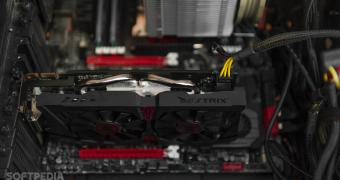
 14 DAY TRIAL //
14 DAY TRIAL // 